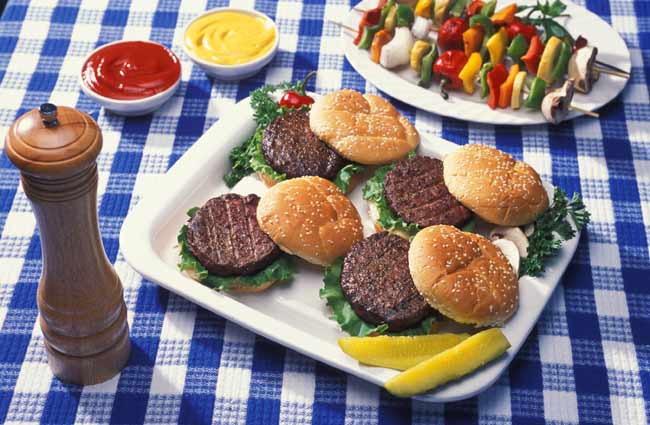Cow-free Beef Proposed

Scientists have proposed two new techniques for growing meat in a lab by a process that could one day make beef cows obsolete.
Don't toss out those beef steaks just yet, however. The technology is in its infant stages and it is not clear whether large-scale production will work. It's not known, for example, how to exercise an animal that doesn't exist, in order to give lab meat the full range of cow-like qualities.
Currently, small amounts of edible fish can be created in the lab. But University of Maryland doctoral student Jason Matheny says that this process could be adapted on an industrial scale -- whole factories producing fish sticks without the fish or chicken nuggets without the real birds.
"With a single cell, you could theoretically produce the world's annual meat supply," Matheny says. "And you could do it in a way that's better for the environment and human health. In the long run, this is a very feasible idea."
Health benefits
Lab-grown meats could be designed to be healthier too.
"For one thing, you could control the nutrients," Matheny says. "For example, most meats are high in the fatty acid Omega 6, which can cause high cholesterol and other health problems. With in vitro meat, you could replace that with Omega 3, which is a healthy fat."
Sign up for the Live Science daily newsletter now
Get the world’s most fascinating discoveries delivered straight to your inbox.
Cultured meats would reduce the environmental burden that comes from raising livestock. Also, it wouldn't need to be treated with antibiotics and other drugs that are common in the industry.
Scientists have already demonstrated that a single muscle cell from a cow or chicken can be turned into thousands in the lab. But so far, these experiments haven't gone large scale.
The methods
To grow meat on large scale, Matheny suggests two methods. One is to grow muscle cells on long, flat membranes. Once the cells are mature, the tissue would be stretched off the membrane and stacked so the product better resembled the real thing.
The other option would be to grow cells on small, three-dimensional beads that stretch with temperature changes. The cells could be scraped off and turned into processed meat like chicken nuggets or ground beef.
The trick, however, is to grow something that tastes like real meat. That means growing not just muscle cells, but other types of tissue -- like fat -- as well. Once the taste is good, the texture has to be just right for consumers to buy into the idea.
"We have to figure out how to 'exercise' the cells. For the right texture, you have to stretch the tissue, like a live animal would," Matheny says.
Matheny's paper was published in the June 29 issue of the journal Tissue Engineering.
- Presto! Instant Petrified Wood Created in Lab
- Printable Skin: 'Inkjet' Breakthrough Makes Human Tissue
- Skin Stem Cells Made into Bone and Muscle
- Bugs Are Considered a Delicacy in Mexico










